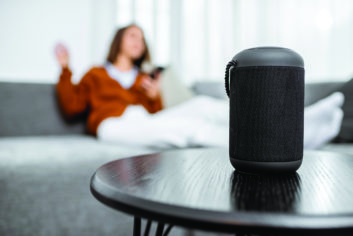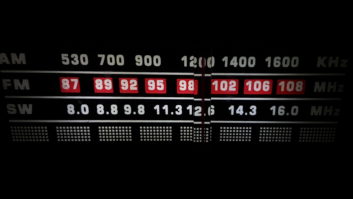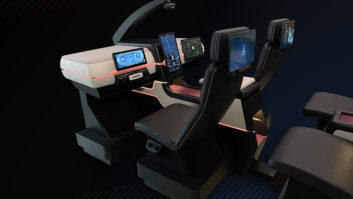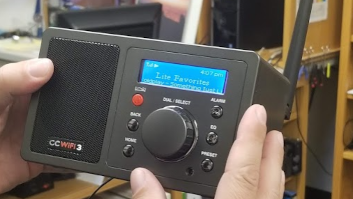
Today, in the third decade of the 21st century, I am noticing disturbing things about our industry and AM radio. We are seeing stations being turned off and licenses turned in because owners are not making enough money to cover operating expenses. It is a shame to hear that an antenna’s real estate value exceeds the value of a station business.
AM radio reception is not getting better, especially in cities where high-rise structures dominate the skyline. In the “old days,” one would try to position an AM radio by the window to get good reception. Today, many structures have reinforced glass in their steel structures, which does not allow reception.
Second, the stations’ audio fidelity has not improved. Once again, in the old days, the station cared about fidelity (granted, most were transmitting music). Today, a station is sending anywhere from 10 kHz to 15 kHz of bandwidth (if they’re lucky) to the transmitter, and it’s compressed with almost no dynamic range.
This is a recipe for listener fatigue, and nobody wants that! Listener fatigue causes the audience to block out the content, including advertising.
Third, and this is a generational problem, the sales departments do not understand AM reception and thus have difficulty selling it. A high-power AM may have better coverage than an FM, but AM has an image of the radio your grandparents listened to.
Granted, there are some successful AMs out there, but not many.
In contrast, streaming is growing, with a lot of the credit going to the smart speakers (thank you, Amazon and Google). The internet is prevalent in homes and the workplace, where radio reception may be limited.
SUGGESTIONS TO THE STREAMS
Many AM broadcasters are streaming audio but only going through the motions. Some are promoting it! Some are even selling it! Will listenership grow? It is inevitable.
What do these stations need to do?
First, realize that the parameters of a stream are not equal to broadcast.
Adjust the audio processing of your stream differently from your over-the-air broadcast. Let it have an audio signature!
The days of a tuning knob to go up and down the dial are gone. There is no need for a loudness war; streaming is now a destination!
If you are playing music, ensure all the instruments can be heard. How often can you say you hear the cymbals, oboe or the cow bell? If you are a talk station, let the transients of the host’s voice be heard with dynamic range.
This can improve total listener hours. All stations want to tell their advertisers that people are listening more. Who knows — the station may even make more money.
[Related: Tesla Offers Infotainment Upgrade That Removes Radio But Pushes Streaming]
Second, many stations are doing dynamic ad insertion. The internet allows for ads to be targeted to the specific listener and location. This can sound good and natural, if done right. The station needs to match the loudness level of its content with the inserted ads, which is not easy but possible. The station must have reliable metadata to cue the ads and adjust the timing so the breaks sound good. These adjustments take time but are well appreciated by all.
Also, the announcer can no longer talk up to the post of the commercial. This sounds great on the air, but is a train wreck on the stream, since the commercials are different than over the air. Yes, this is a downfall of dynamic ad insertion.
SMART SPEAKER ADVANTAGE — THE FUTURE IS NOW
The fastest adoption by the public of a new technology has been the smart speaker. Significantly, sports leagues like the NFL recognize the value of smart speakers and are restricting sports rights, since they realize this is a new profitable market.
Many people use smart speakers to listen to radio stations. Here’s a revelation — this is streaming. You are not seeing a growth in radios in the home, but you are seeing more smart speakers. In fact, the technology is even beginning to creep into cars.
Smart speakers are the new home radio. Can they sound good — yes! Will more models emerge — yes!
[Read more: Techsurvey 2020 Tracks Smart Speaker Success]
Can streaming save AM radio? Maybe. For many years, radio has said they are now content providers, now radio has to believe it. Currently, many are calling for AM to be turned off. Others are calling for AM to go “all digital.”
Why turn it off if AM can eventually evolve into a streamed source with growing listenership (not today, maybe tomorrow)?
Why go all-digital with HD Radio? Deep pockets will be needed to fund it, and the shift will require major education to the sales staff and the listeners. And even then, how would sales earn their commissions? Plus, who will teach the local Best Buy clerk that the features exist!
AM is the immediate problem, but issues for FM will follow shortly — especially with translators populating every free spot on the band.
These are some of my reasons for saying that streaming with smart speakers has the capability of saving the AM broadcaster. Of course, I will also say: Content is still king.
David Bialik is the co-chair of the Audio Engineering Society’s Technical Committee for Broadcast and Online Delivery and is a Fellow of the AES. He was the director of stream operations for Entercom Communications and CBS Radio. Bialik is available for consulting at (845) 634-6595 or dkbialik@erols.com.







